© ROOT-NATION.com - Use of content is permitted with a backlink.
Due to damage to Ukraine’s energy infrastructure caused by Russian rocket fire, power outages are a common occurrence for residents. In today’s reality, the question of whether to buy a portable charging station for an apartment is no longer just a concern. Instead, the focus shifts to choosing the right model.
While those with budget constraints can opt for a full-fledged energy storage and backup power system with a capacity of 3-5-7 kWh or more, most people find an average power station sufficient to power critical home appliances and ensure the operation of a PC, router, or charge a smartphone and laptop.
For city apartment dwellers, a portable station with a capacity of about 2 kWh is the most optimal option in terms of both features and cost. Today, we will compare two such stations: the BLUETTI AC200L and the OUKITEL P2001 Plus. Let’s find out which station is better!
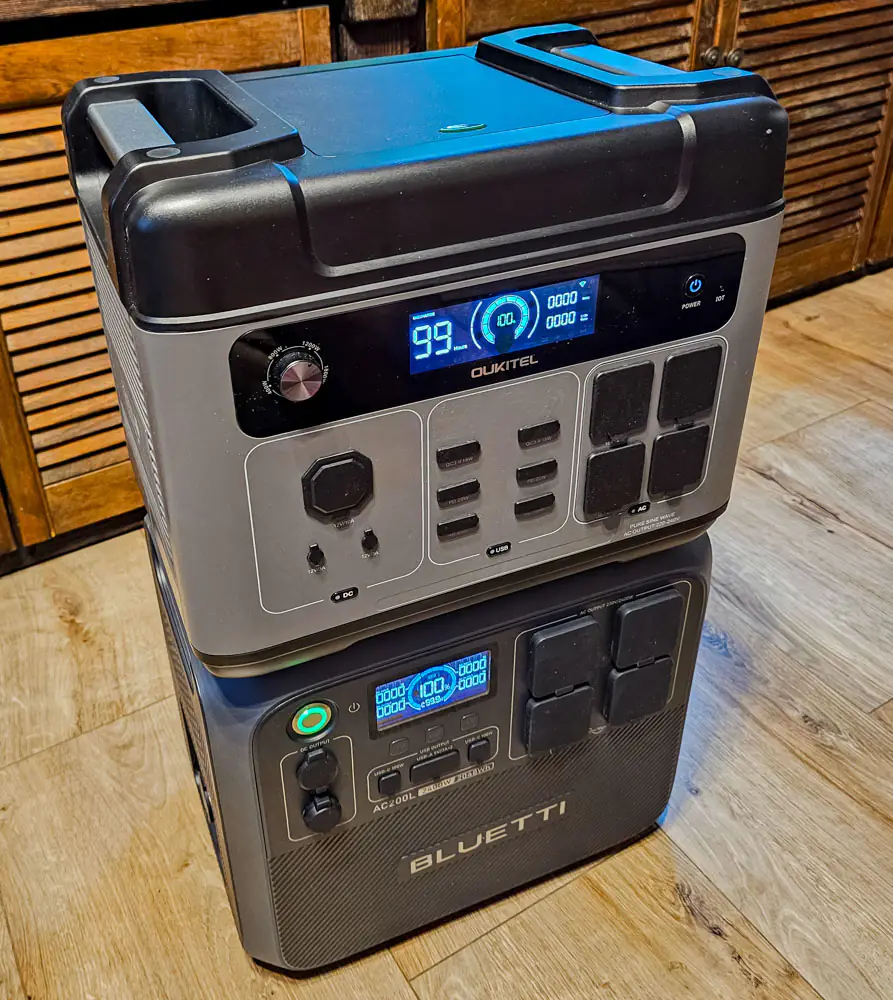
Our reviews
Before delving into direct product comparisons, I suggest you read or watch our reviews of both models. You can skip this section and proceed to the main comparison below.
BLUETTI AC200L

OUKITEL P2001 Plus

BLUETTI AC200L vs OUKITEL P2001 Plus
Next, I’ll conduct direct comparisons of stations based on various parameters. After each section, I’ll provide specific assessments. The station that receives the highest score will earn 10 points, while the competitor will receive a lower score to highlight the differences between the stations, in my opinion.
Price and positioning
So, let’s start with the cost of the stations. With similar electrical characteristics at first glance, these are products from different price segments. BLUETTI AC200L is a premium charging station from the market leader, which costs around 1400 EUR in the official European store.

At the same time, OUKITEL P2001 Plus is a relatively inexpensive model from a Chinese manufacturer that specializes in the production of affordable smartphones. The cost of the station in Europe is approximately 800 EUR.
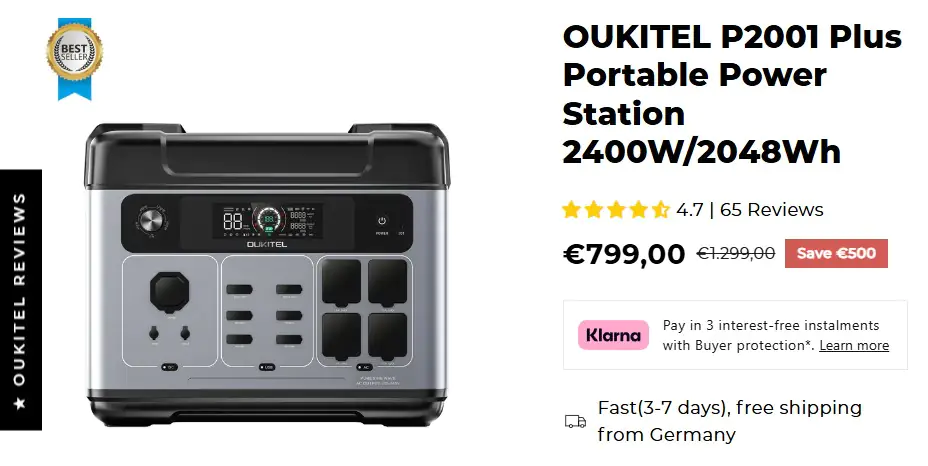
In essence, the price difference is nearly double! Therefore, is it worthwhile to pay more? Perhaps it is more prudent to purchase two OUKITEL devices instead of a single Bluetti station.
Regardless, in this competition for the consumer’s wallet, the clear victor is the one who can make the most cost-effective purchase.
- BLUETTI AC200L – 6 points
- OUKITEL P2001 Plus – 10 points
Design, materials, build quality
I believe that the appearance of a charging station is not a significant factor in the context of war, the destruction of energy infrastructure, and the constant threat to civilian populations. However, I will still conduct a formal evaluation of the exterior and design of each product.
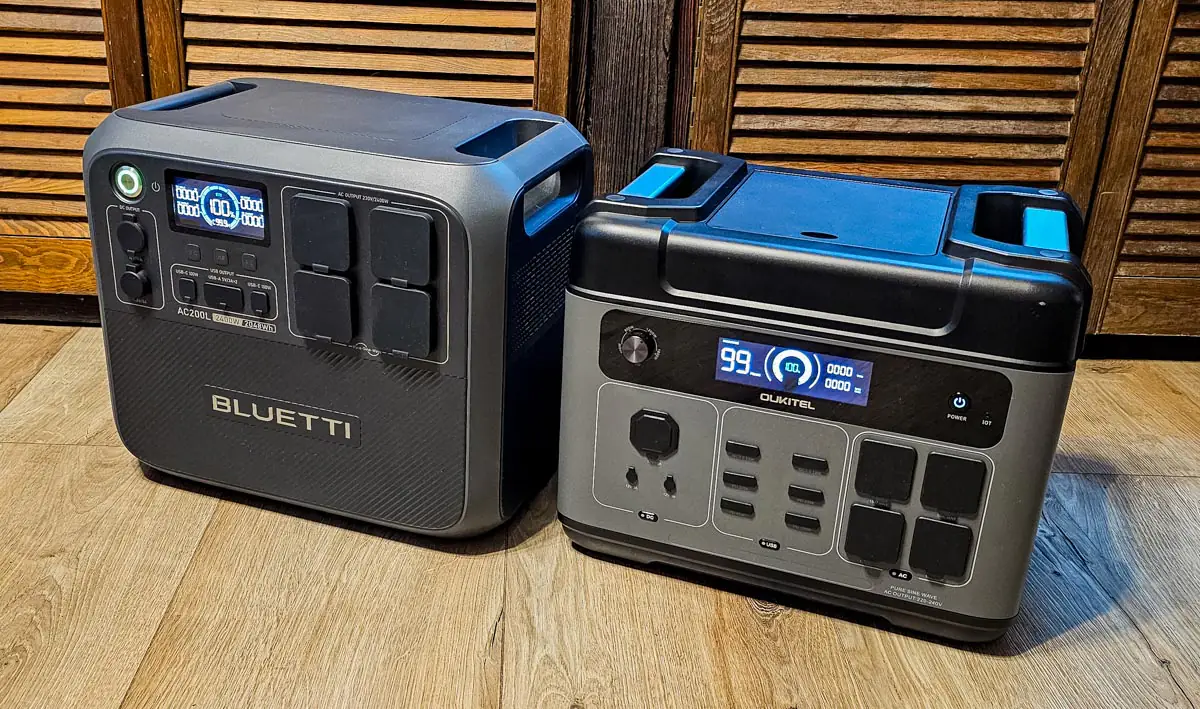
First and foremost, it’s worth mentioning that the BLUETTI AC200L is slightly larger and heavier than the OUKITEL P2001 Plus. This difference is apparently responsible for some of the variations in the electrical characteristics of the devices we’ll discuss later.
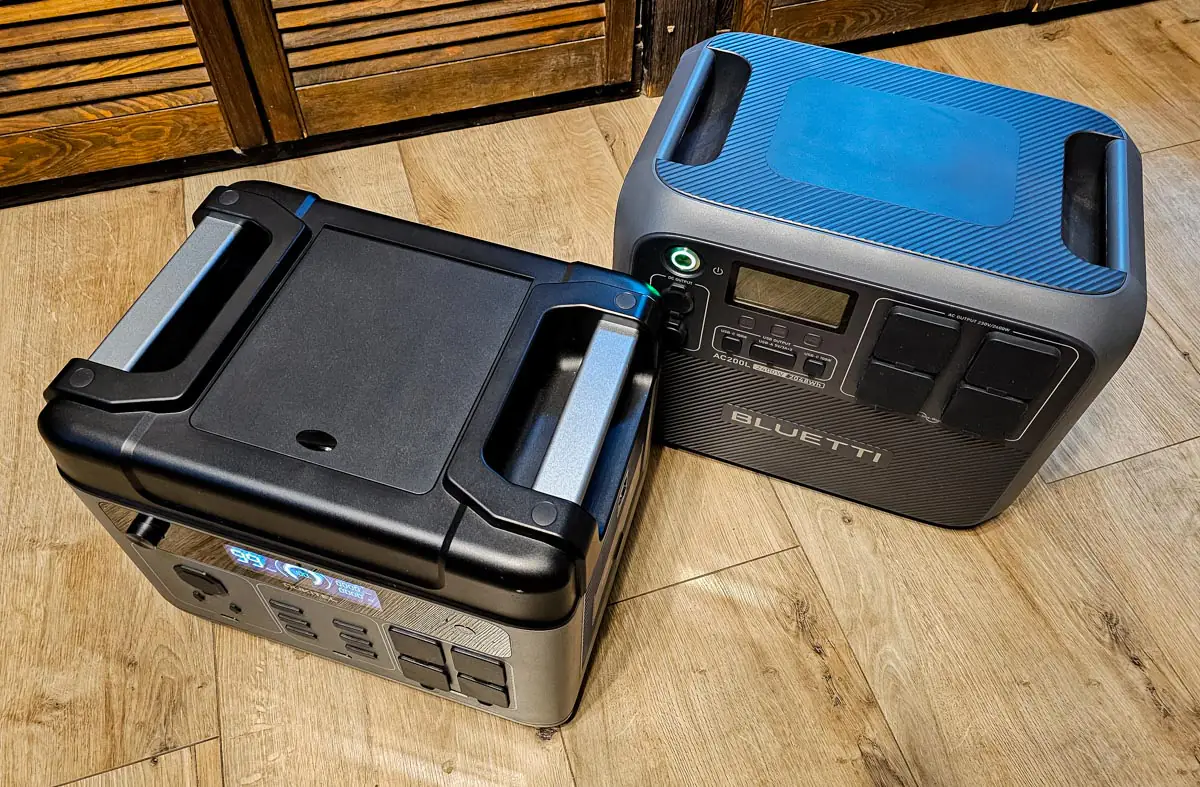
Both stations have a practical and utilitarian design. They are made of high-quality and durable plastic and have basic protection against dust and moisture. I have no complaints about the build quality.
But the BLUETTI AC200L looks more stylish in my opinion due to the restrained selection of colors and texture of the front panel.
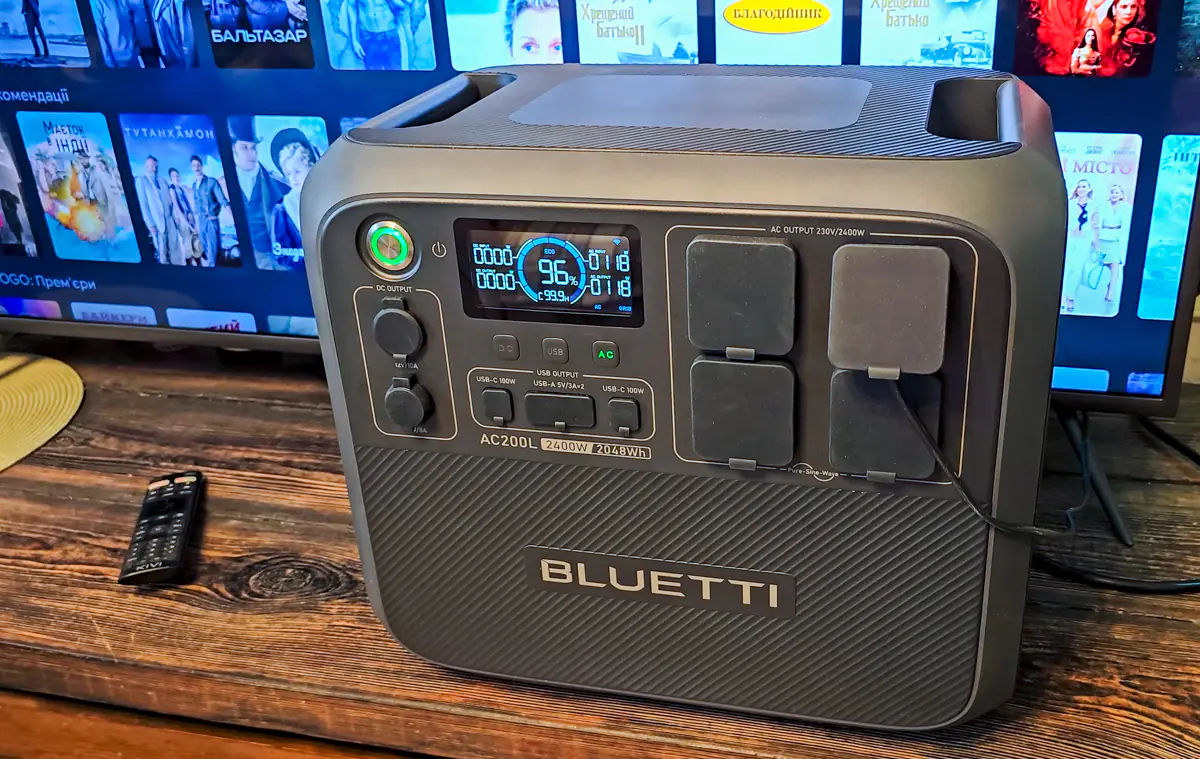
Such a device can even be placed in plain sight within the house, and it will almost certainly not detract from the interior decor.
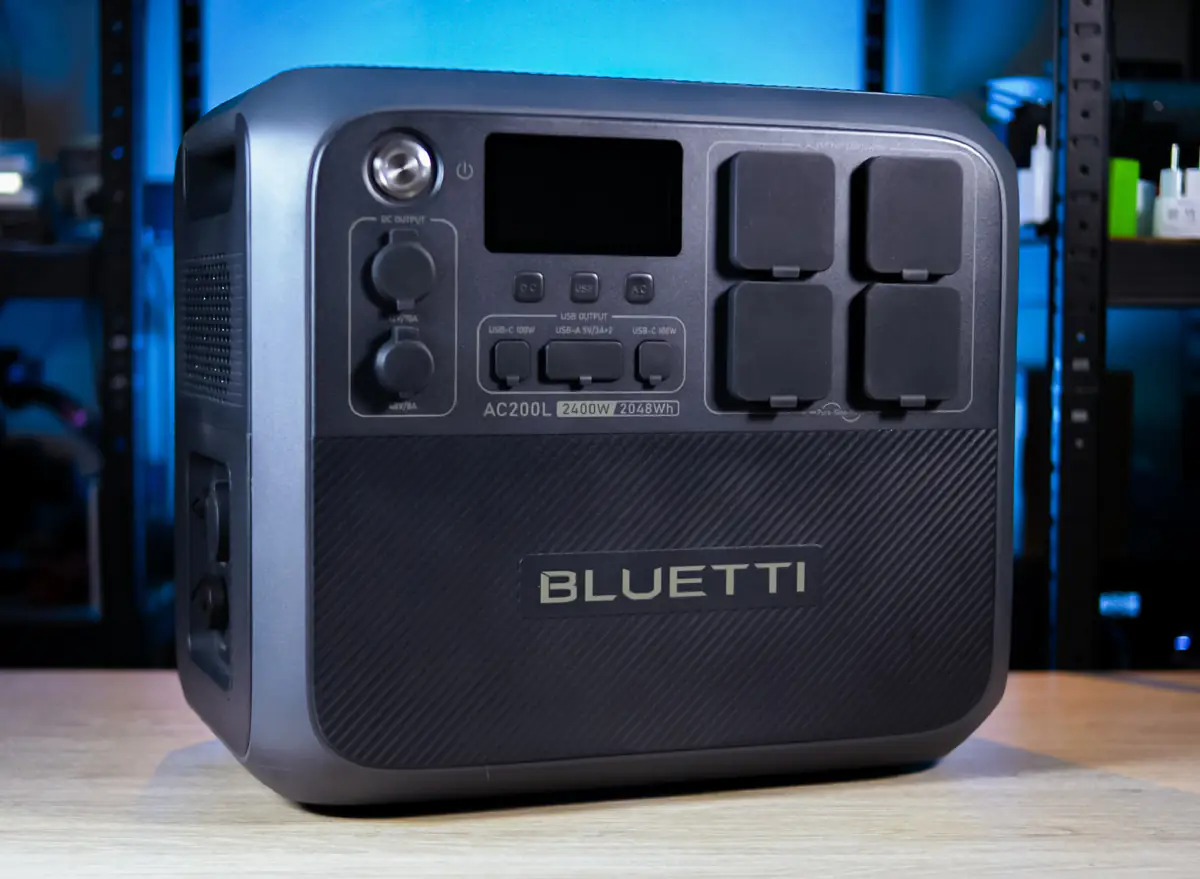
On the other hand, the OUKITEL P2001 Plus exudes a typical Asian design, which leans slightly towards the toy-like side due to its contrasting color scheme. However, I must admit that the overall appearance is not entirely unappealing.
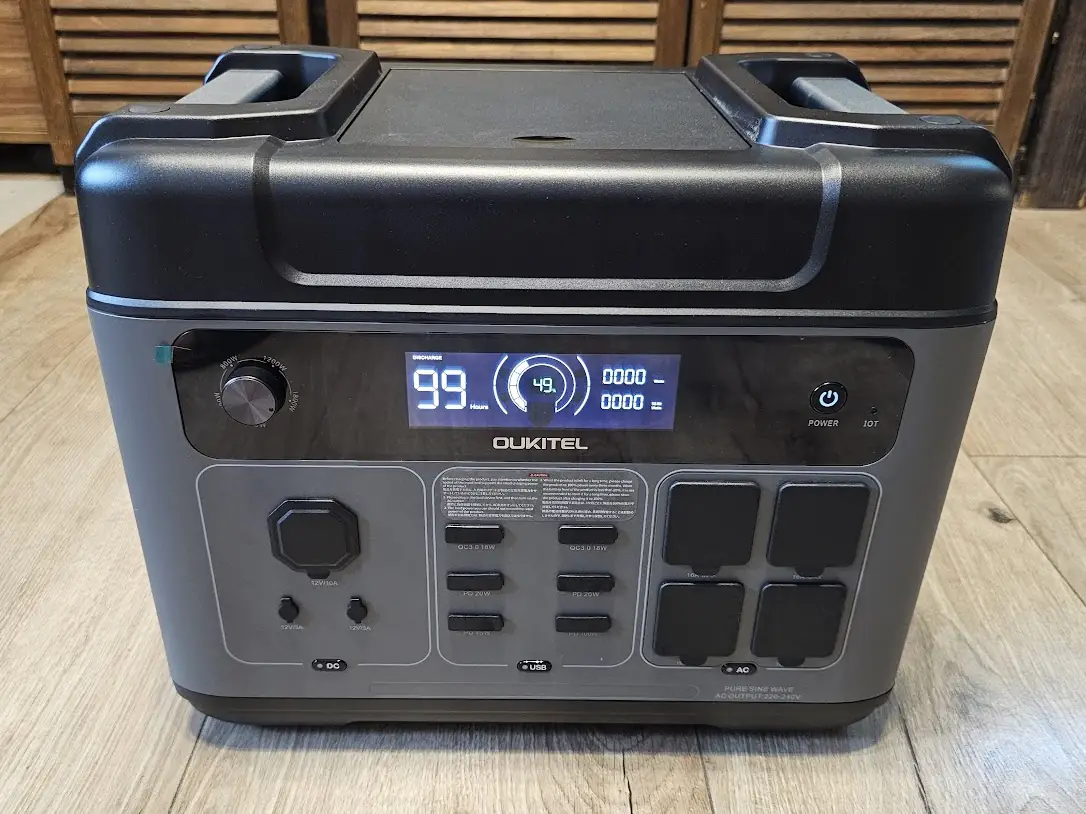
Also, this station has several design advantages: a convenient drawer with a lid for storing accessories on top and aluminum carrying handles.
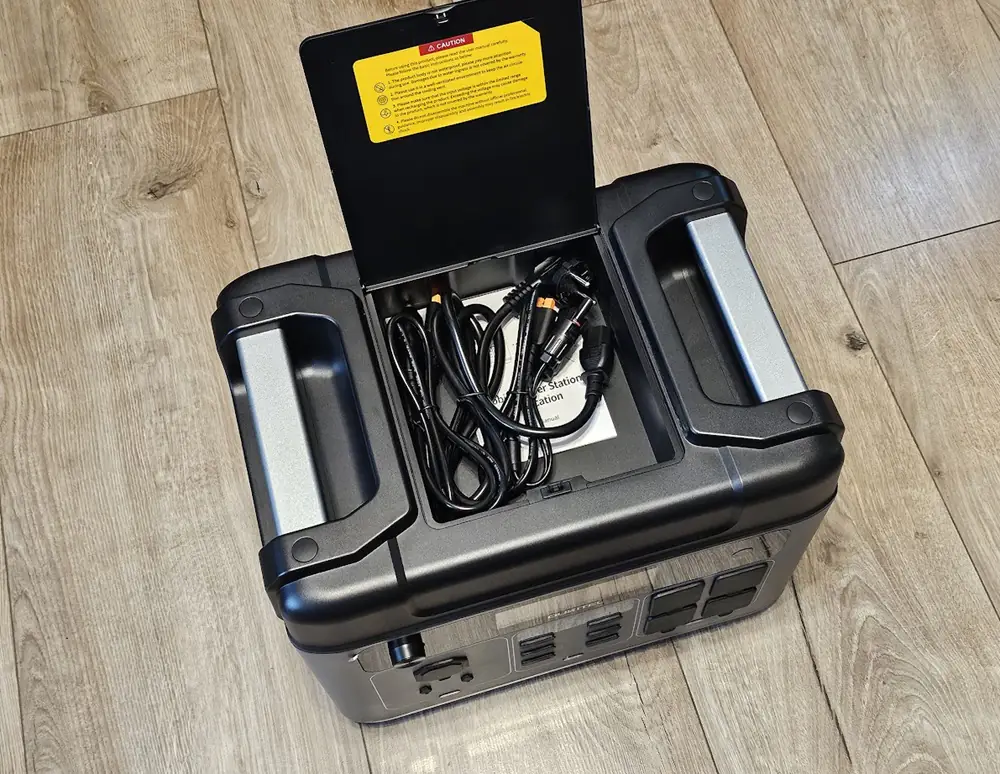
Purely my subjective opinion and a matter of personal taste, but so far the standings are:
- BLUETTI AC200L – 10 points
- OUKITEL P2001 Plus – 9 points
Read also: Review of the Sumry HGS 5500W Off Grid Solar Inverter and Sunjetpower 100AH 51V Battery
Set
In this aspect, the stations don’t make a notable difference. Besides the instructions and warranty cards, the sets include three essential cables: one for charging from the AC mains, another for solar panels, and a third for a car outlet. Notably, the AC200L is equipped with a special adapter cable for connecting to the station’s proprietary DC port. Additionally, a solar panel or car charging cable is connected to it. This is a mandatory component that’s absent in the P2001 Plus, which simply includes two cables with standard connectors and a standard DC input.
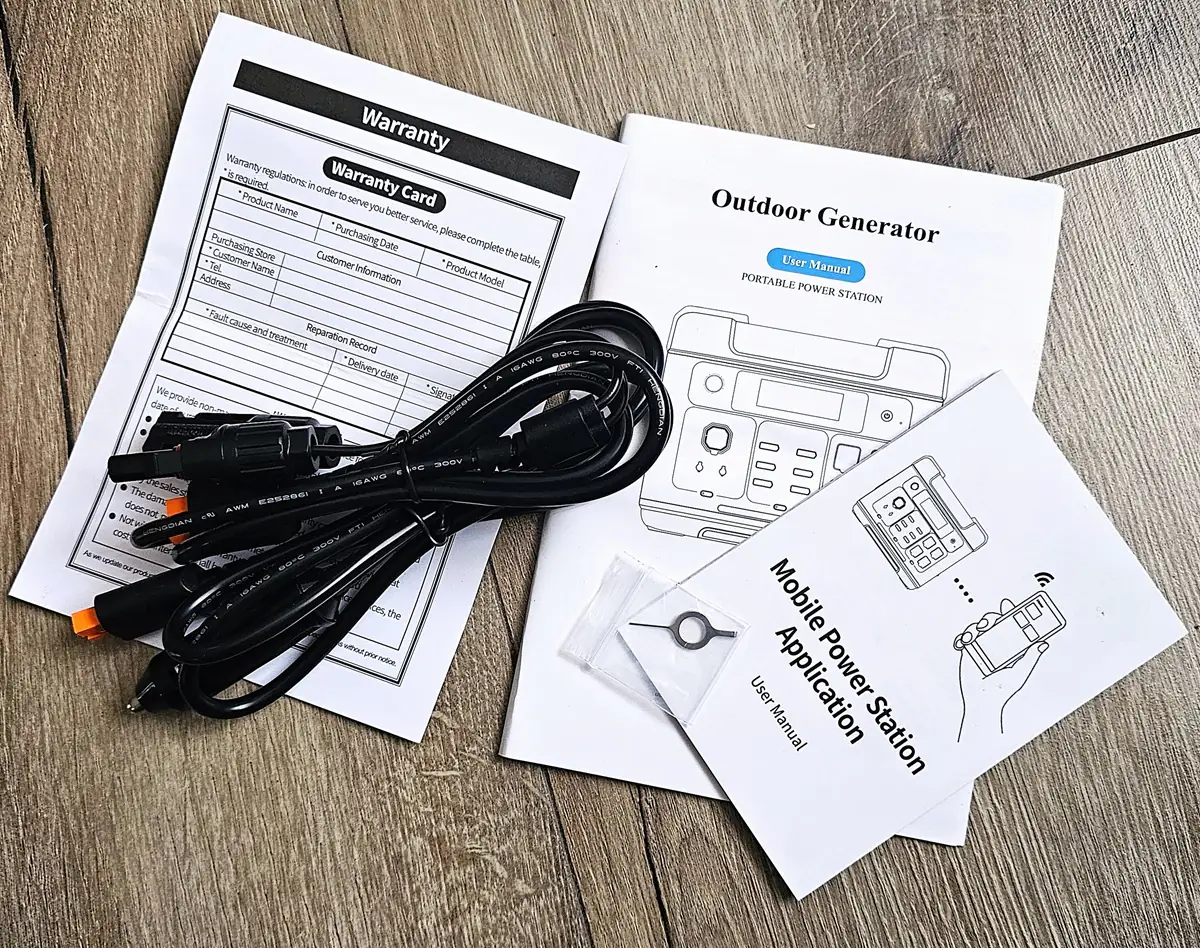
BLUETTI cables come with a branded Velcro belt and a moisture-proof fabric case for accessories. OUKITEL’s station has a separate upper pocket for cables and accessories, eliminating the need for a cover.
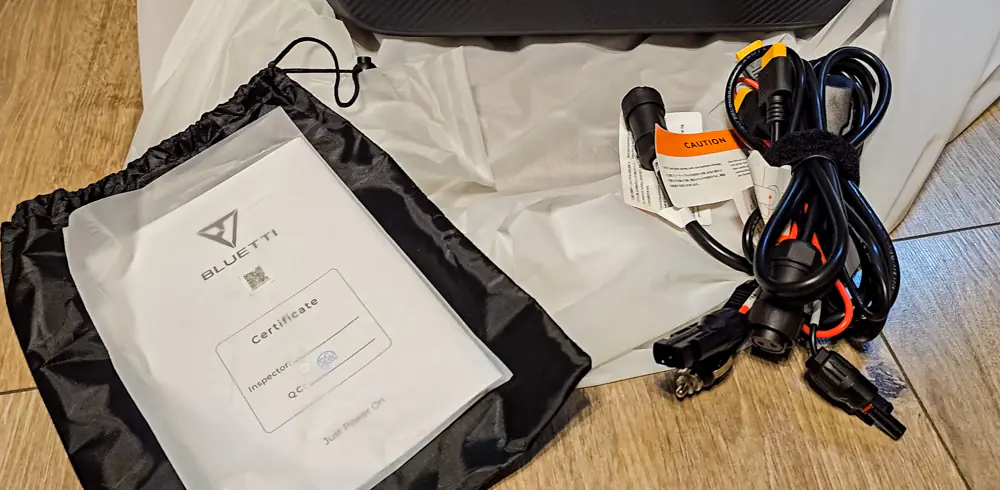
Despite the fact that the AC200L comes with more elements in the set, I won’t choose any model over the other because these are just features of the layout and design. In general, both products include everything you need.
- BLUETTI AC200L – 10 points
- OUKITEL P2001 Plus – 10 балів
Ports and connections
Each station has 4 AC outlets and a car outlet. But if we look at the USB unit, here we will only see 2x USB-A and 2x USB-C in the AC200L, while in the P2001 Plus there are 2 USB-C more.
OUKITEL also has 2 useful 12V DC coaxial connectors that can be used to power network equipment or surveillance cameras.
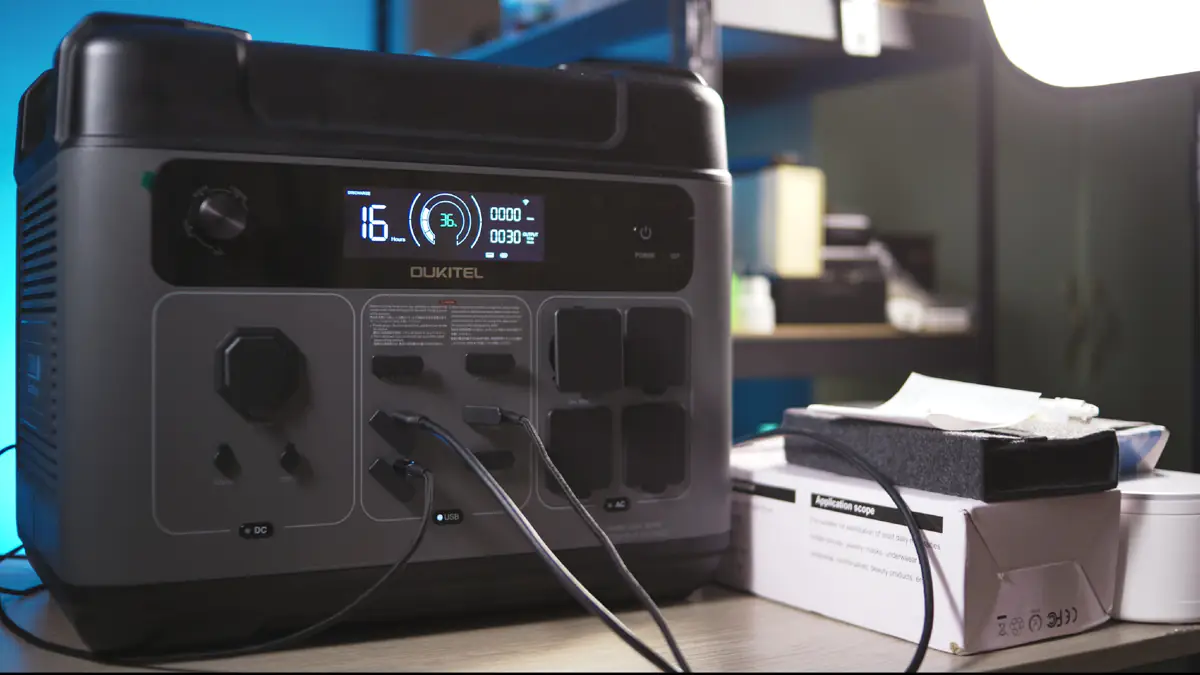
At the same time, the BLUETTI station has one DC 48V connector.
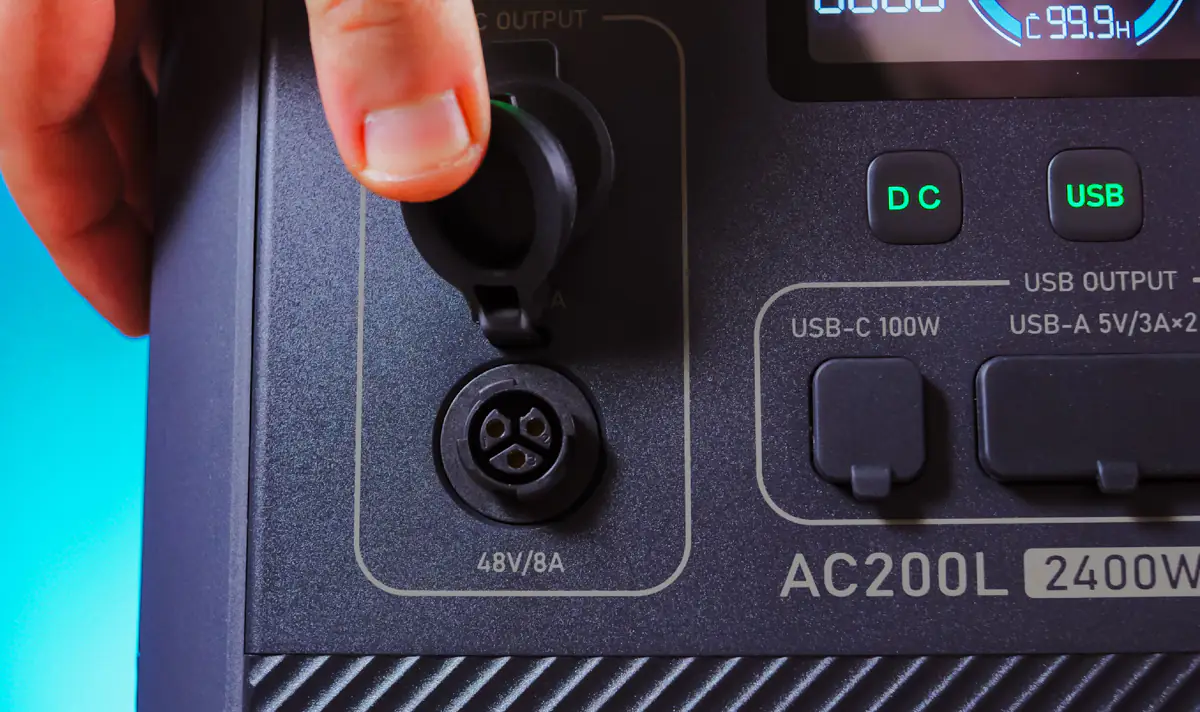
As for the AC input, there’s a crucial point to consider. The OUKITEL P2001 Plus is connected to the mains using a standard C14 power cable, which is commonly used for PCs, monitors, and other equipment. This makes it easy to replace the cable in case of loss or damage. Additionally, a cover is provided for the station body, which transforms into a miniature roof above the connector block when the station is in the open position, providing basic protection against rain.
BLUETTI uses a cable with a proprietary connector and a threaded retainer for both the power cord and the DC input. This design offers enhanced reliability and splash protection. However, it can be inconvenient if you lose the cables, as quick replacement may be challenging.
In addition, I can envision a scenario where someone or something inadvertently grabs onto a power cable and yanks it out of the connector. For instance, with OUKITEL, the cable is likely to be easily detachable from the station, preventing any severe consequences. However, with BLUETTI, the cable is firmly attached to the station. Consequently, such an incident could cause the equipment to fall or damage the cable, lock, or connector. While I’m not suggesting that this scenario is inevitable, it’s worth acknowledging that it’s a possibility.
Points:
- BLUETTI AC200L – 7 points
- OUKITEL P2001 Plus – 10 points
Power
The primary feature of any station is the power of the AC inverter. This parameter indicates the maximum total power of consumers that can be connected to the source simultaneously. Initially, it appears that the stations have parity, as they all have a declared nominal power of 2400 W.
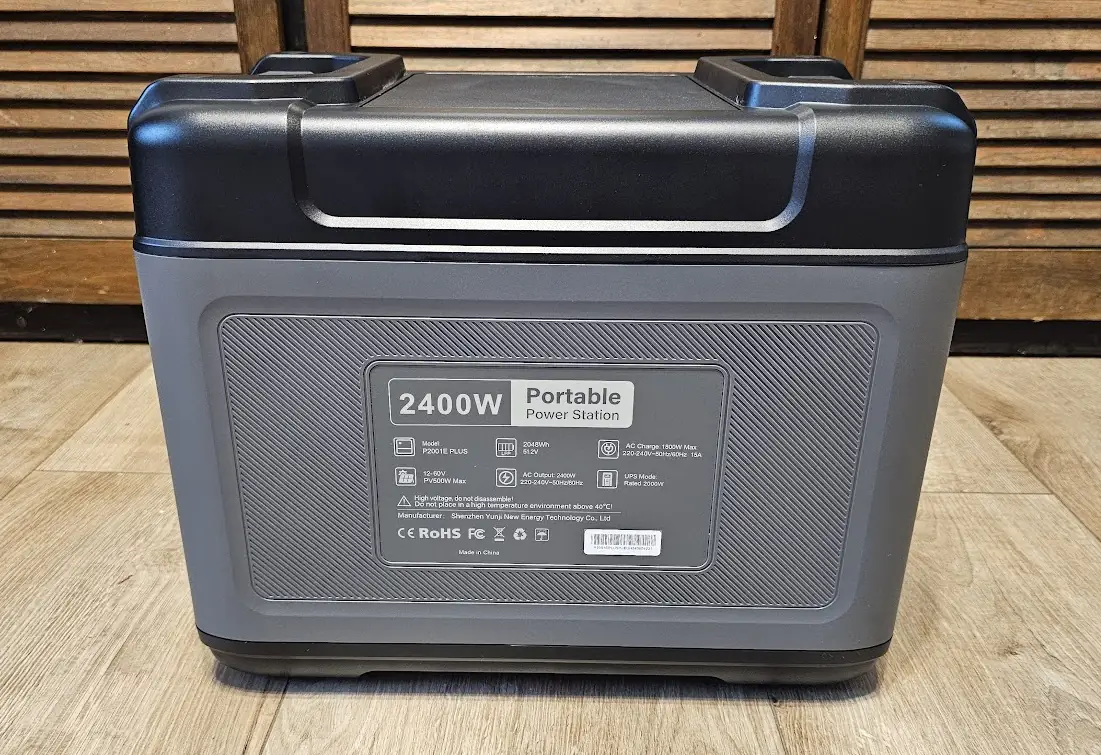
However, upon examining the specifications more closely, the BLUETTI AC200L stands out with a built-in high-power mode capable of reaching up to 3600W, which can be activated via its mobile app. This feature provides a notable advantage for the AC200L over its competitor.
Another key factor to consider is the inverter’s surge power. Certain devices require a higher initial current, and thus greater power, for just a brief moment during startup — sometimes only for a fraction of a second. After this initial surge, the power consumption often drops significantly to its nominal level. While the OUKITEL P2001 Plus offers a reasonable surge power of up to 4800W, double its nominal capacity, the BLUETTI AC200L delivers a significantly higher surge power of 7200W.
In practical terms, with a nominal power of 3600W and a surge power of 7200W, the AC200L operates at a level comparable to a full-fledged backup power system. It’s difficult to imagine a household device that couldn’t be started and reliably powered by this portable power station in an apartment setting.
In summary, the AC200L emerges as a clear leader in this comparison.
- BLUETTI AC200L – 10 points
- OUKITEL P2001 Plus – 7 points
Battery capacity and expandability
Perhaps the most crucial factor to consider when selecting a portable charging station is its built-in battery capacity. In essence, this parameter reflects the station’s battery life, which quantifies the number of hours it can power devices when the power supply is disconnected. Notably, the charging stations in this category offer an equal capacity of 2048 Wh.
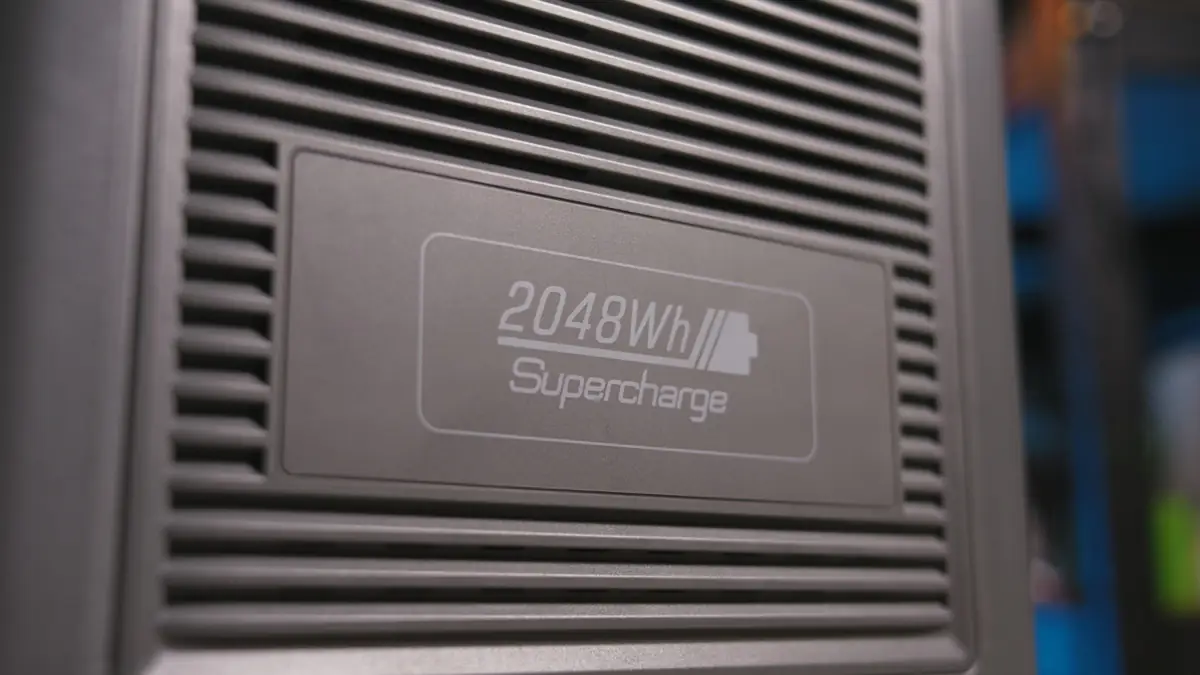
You can roughly estimate the runtime of a power station by dividing its capacity by the total power consumption of your connected devices. Based on common usage scenarios, a large TV typically consumes 120-130W, a refrigerator 130-150W, an air conditioner 600-700W, a mid-range PC with a monitor 150-200W, and a Wi-Fi router 8-12W.
It’s worth noting that power-hungry devices with extended operating cycles, such as washing machines, dishwashers, or electric stoves, are not ideal for use with a power station. These appliances often draw over 1000W, which means a 2048Wh station would only power them for around 1.5 hours. On the other hand, high-power devices with shorter operating times—like coffee makers, toasters, or microwaves—are more feasible, as they typically consume about 1000W but run for just 1-2 minutes per cycle.
From experience, the average total power draw for critical devices in a standard 2-3 bedroom apartment is around 200-400W at any given time. In such cases, most power stations can provide backup power for approximately 5-8 hours. However, by actively limiting power usage during outages, you can extend the runtime significantly.
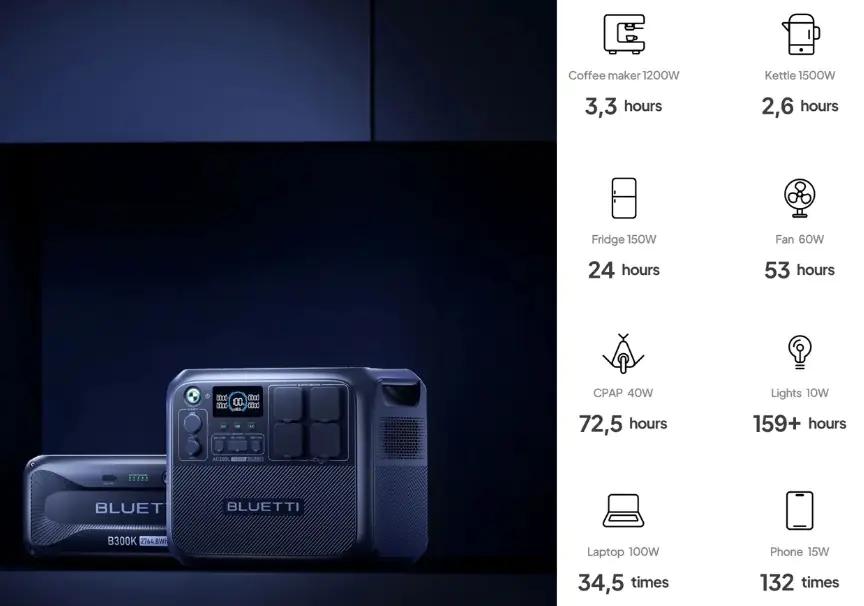
In this section, we would have the same estimates if it weren’t for the presence of a separate port to connect additional batteries to the BLUETTI AC200L. This feature allows you to significantly increase the overall capacity of the system, which is particularly useful considering the high power of the AC inverter. In fact, this station can be used to build a complete energy storage and backup power supply system for an apartment, cottage, or small house.
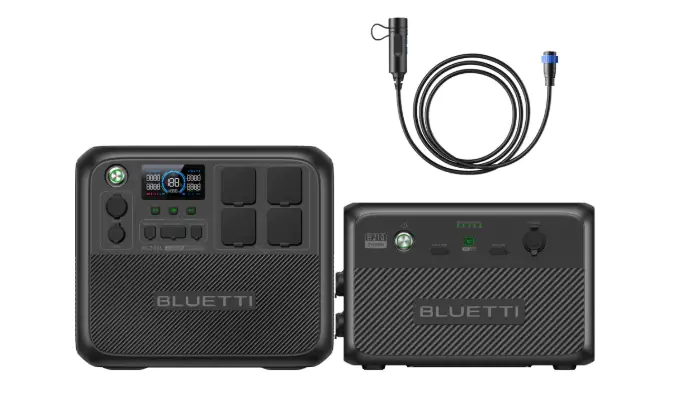
In addition to the AC200L, you can connect the following modules:
- 1 x B230 or B210 (2150 Wh) = in total we get 4198 Wh
- 1 x B300K (2764,8 Wh) = in total we get 4812,8 Wh
- 2 x B210 (2150 W×h) = total we get 6348 Wh
- 2 x B300K (2764,8 W×h) = total we get 7578 Wh
Of course, the final cost of such a system, considering additional batteries, will be quite high. Only branded modules can be connected to the station, and they are not inexpensive. However, unlike the competitor, the system offers the possibility of expansion, a corresponding connector, and the software.
- BLUETTI AC200L – 10 points
- OUKITEL P2001 Plus – 5 points
Read also: ALLPOWERS S1500 Portable Power Station (AP-SS-008): Review and user experience
Uninterruptible Power Supply (UPS)
How does it work? When grid power is available, the station simply passes electricity to devices connected to its AC outlets, without drawing on the internal battery. During this time, the inverter remains in standby mode, and the battery’s charge is preserved.
If grid power is interrupted, the station automatically activates its inverter, supplying power to connected devices from the built-in battery. Once the grid power is restored, the station switches the load back to the grid and begins recharging its battery. When the battery is fully charged, the charging process stops automatically. This cycle repeats as necessary, ensuring continuous operation.
Video Example: Here’s how the UPS and pass-through charging functions work with the BLUETTI AC200L:

As a result, all equipment connected to the station’s AC outlets will receive uninterrupted power. However, there’s an important detail to keep in mind: extension cords can affect the functionality of the UPS feature. If you’re connecting critical devices, it’s best to plug them directly into the station’s outlets or use simple extension cords without splitters or additional protection elements.
Regarding the actual performance of the UPS feature on specific models, I didn’t notice significant differences overall. However, BLUETTI AC200L advertises a UPS switchover speed of up to 20 ms, while the OUKITEL P2001 Plus claims a faster response time of 10 ms. This difference might matter for highly sensitive devices.
In my experience, I encountered an issue where devices lost power during the switch from grid to battery on the AC200L. Upon investigation, I found that this was caused by using an extension cord. When connecting directly to the station, the problem disappeared. Interestingly, the same extension cord setup worked flawlessly with the P2001 Plus. This suggests that the OUKITEL’s UPS function might indeed be slightly faster in real-world conditions. Based on this, I deduct a point from the BLUETTI AC200L in this aspect of the comparison.
- BLUETTI AC200L – 9 points
- OUKITEL P2001 Plus – 10 points
Charging
The primary advantage of both stations is their support for end-to-end fast charging from the stationary AC power grid. Beyond high charging power and reduced full charge times, this capability is crucial for operating the station in the UPS mode, as I mentioned earlier. If you notice that the station is connected to the mains with a direct cable, it’s likely to support both charging and the UPS functions. However, if the station comes with a separate charging unit, these functions are absent since such a station is charged solely with direct current.
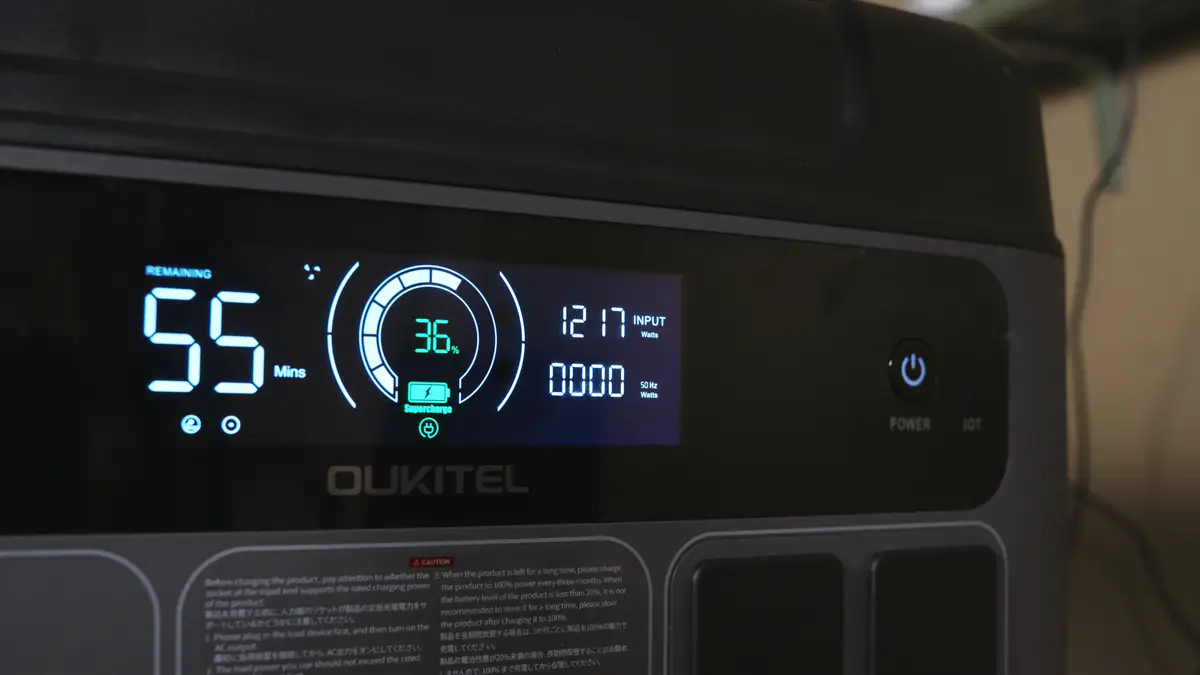
The BLUETTI AC200L supports a total power of 2400 watts across all input interfaces. It boasts an impressive maximum charging power of 2400 watts from the AC network and 1200 watts from solar panels. In contrast, the OUKITEL P2001 Plus offers a total power of 2300 watts, with AC charging contributing 1800 watts and solar panel power contributing only 500 watts.
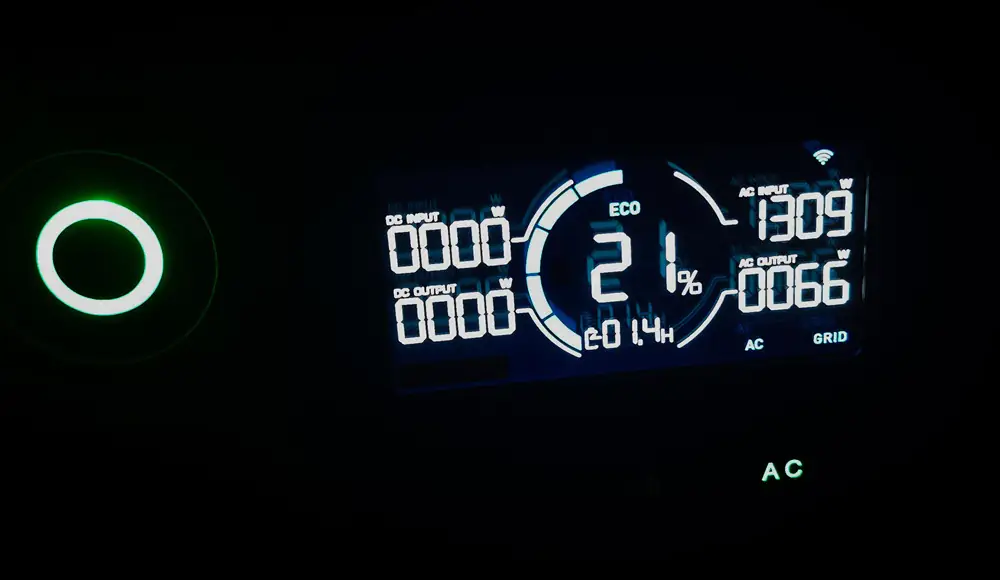
Although in practice, both stations are charged very quickly from the stationary power grid — a little over an hour — the capabilities of BLUETTI AC200L in this regard are noticeably wider, especially when charging from solar panels. Consequently, this factor affects the estimates.
- BLUETTI AC200L – 10 points
- OUKITEL P2001 Plus – 7 points
Noise
In my opinion, the primary drawback of the OUKITEL P2001 Plus is its continuous cooling system operation when charging, running the inverter, or in UPS mode. This results in a persistent fan noise, although it’s not particularly loud (up to 50 dB, comparable to a powerful PC system unit). My previous ALLPOWERS S1500 station produced significantly higher noise levels, which were quite noticeable.
Attention! Important information about the software update for OUKITEL P2001 Plus, which reduces the noise level during operation – in the comments under the article.
However, when compared to its competitor, the BLUETTI AC200L can be considered virtually silent. While the cooling system still operates intermittently, the noise is only noticeable if you lean in close to the station and actively listen. In fact, it’s quite refreshing, especially when placed in a living space.
- BLUETTI AC200L – 10 points
- OUKITEL P2001 Plus – 6 points
Built-in display and controls
Both models belong to the new generation of portable power stations, a notable feature being their lack of a built-in interface for settings. This feature entirely relies on the mobile application. Consequently, both stations have purely informative displays. They show almost the same set of parameters, including current charging power and time to full charge, or power consumption and projected battery life.
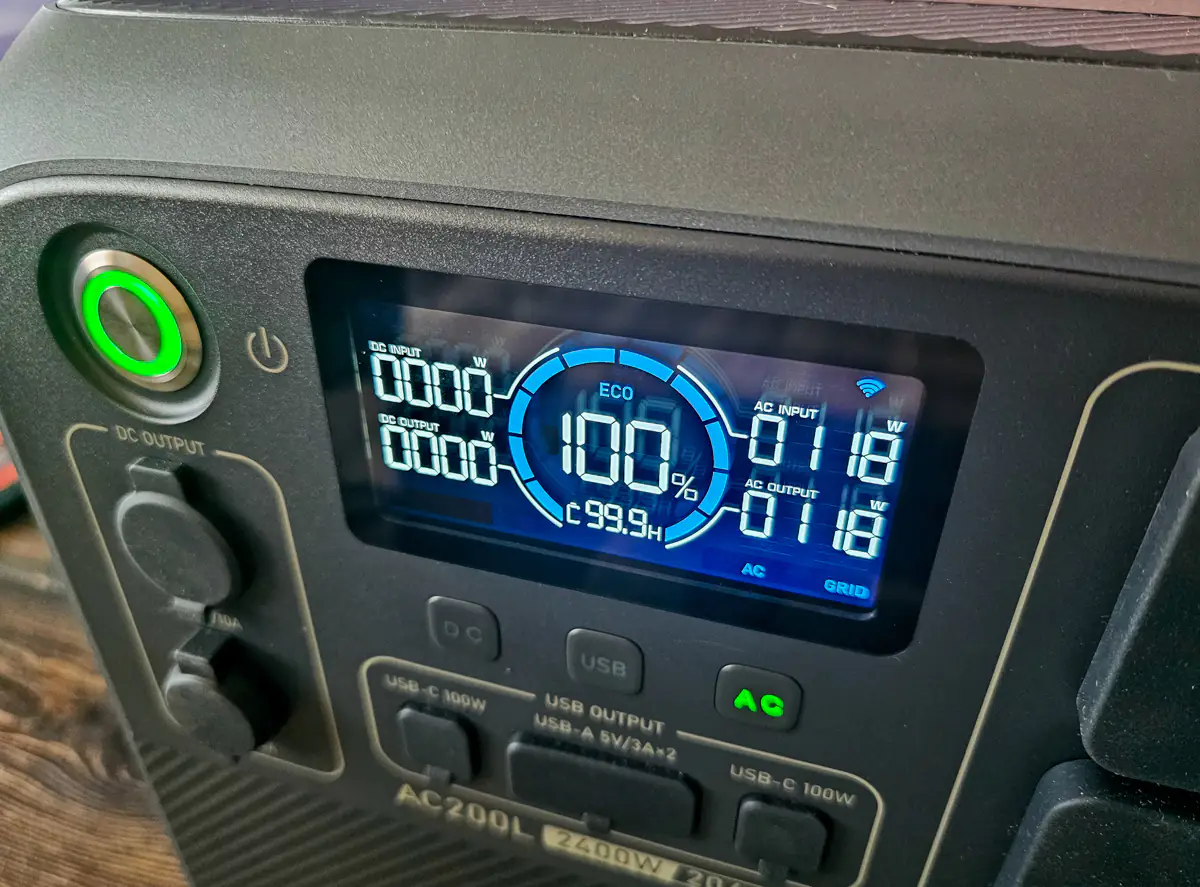
Of course, the screens display the current battery level and the operating modes of the active output interfaces. Regarding the quality of the displays, I have no complaints. They are quite similar in terms of brightness, both indoors and outdoors. Unfortunately, I haven’t had the chance to test them in direct sunlight.
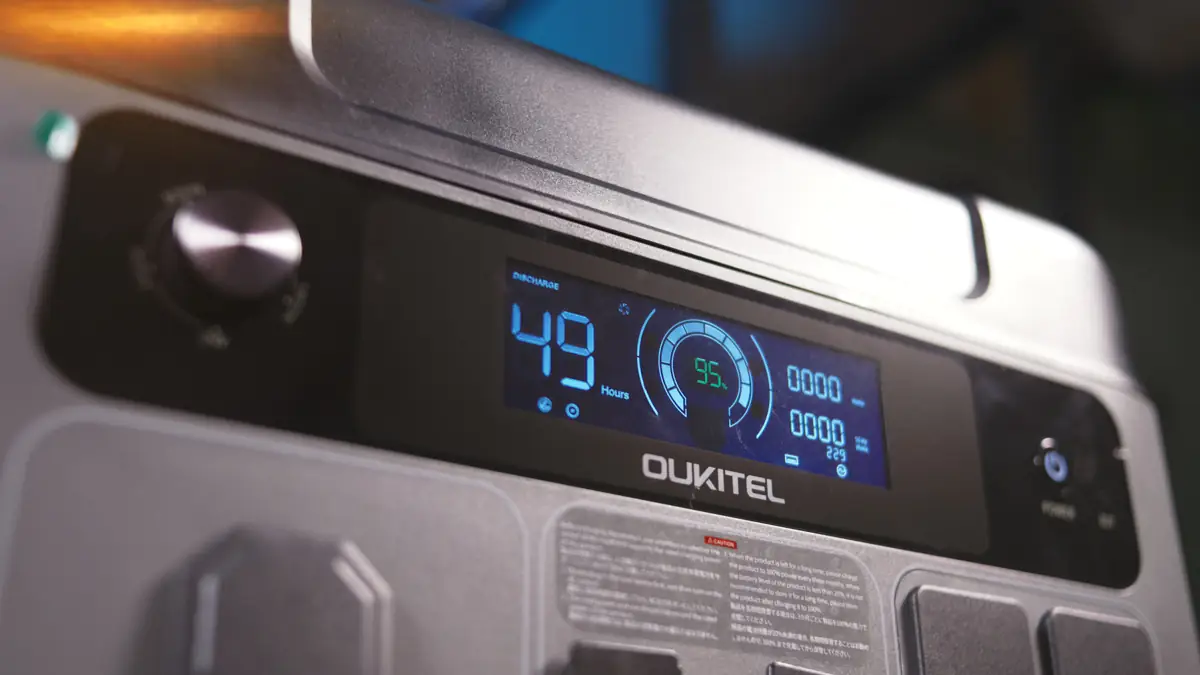
Each station has only three buttons to control the output interfaces: AC, DC, USB, and power buttons. However, the OUKITEL P2001 Plus also features a separate mechanical charging power limit regulator with settings ranging from 0 to 1800 watts.
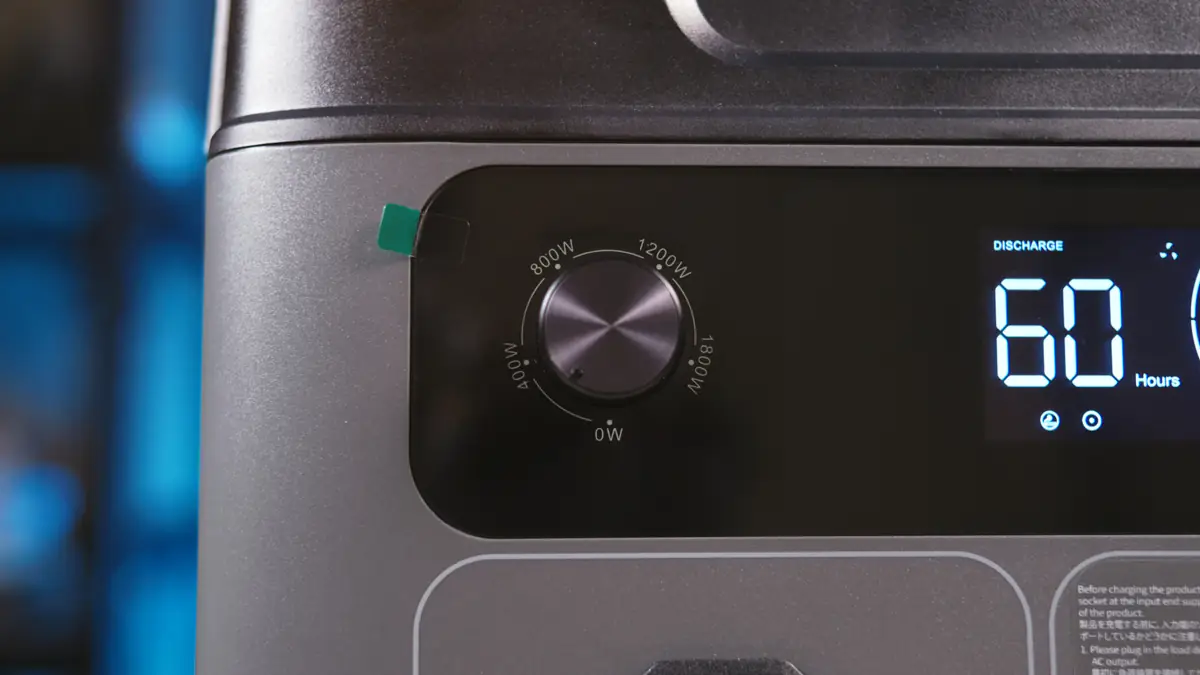
For this, it receives a higher rating in this section.
- BLUETTI AC200L – 9 points
- OUKITEL P2001 Plus – 10 points
Mobile app
The BLUETTI AC200L is controlled through a user-friendly smartphone application. The app is highly informative and offers a wide range of settings for customizing the station’s operating modes. It supports local connections via Bluetooth or a cloud service, as well as Wi-Fi. This allows you to remotely access the station over the Internet.
Android:
iOS:
Video: BLUETTI mobile app screencast

As for the OUKITEL P2001 Plus, it also connects to the mobile application, offering two options: Wonderfree and Landbook. However, these applications are not branded and serve as hubs for connecting various smart home elements, including our charging station.
Android:
iOS:
The advanced BLUETTI app clearly outshines the software provided for the OUKITEL station. While OUKITEL’s app only offers basic features such as monitoring, toggling consumer groups on and off, and adjusting charging speed, it essentially replicates the controls available on the station itself.
In contrast, BLUETTI’s app provides a much broader range of functionality, elevating the user experience significantly. Based on these differences, the verdict is clear: BLUETTI takes the lead in this category.
- BLUETTI AC200L – 10 points
- OUKITEL P2001 Plus – 6 points
Final comparison evaluations
| AC200L | P2001 Plus | |
| Price | 6 | 10 |
| Design | 10 | 9 |
| Set | 10 | 10 |
| Interfaces | 7 | 10 |
| Power | 10 | 7 |
| Capacity | 10 | 5 |
| UPS | 9 | 10 |
| Charging | 10 | 7 |
| Noise | 10 | 6 |
| Controls | 9 | 10 |
| App | 10 | 6 |
| Verdict | 9.2 | 8.2 |
Experience of use
As you likely already guessed, both stations are currently working in my apartment. Consequently, the current power outages lasting 4-6 hours a day don’t bother me much. If the power supply is limited even further, having electricity in the network for just 2-3 hours a day would suffice to meet all my urgent needs— starting the washing machine and dishwasher, heating the boiler with water, and charging the batteries of the portable station.
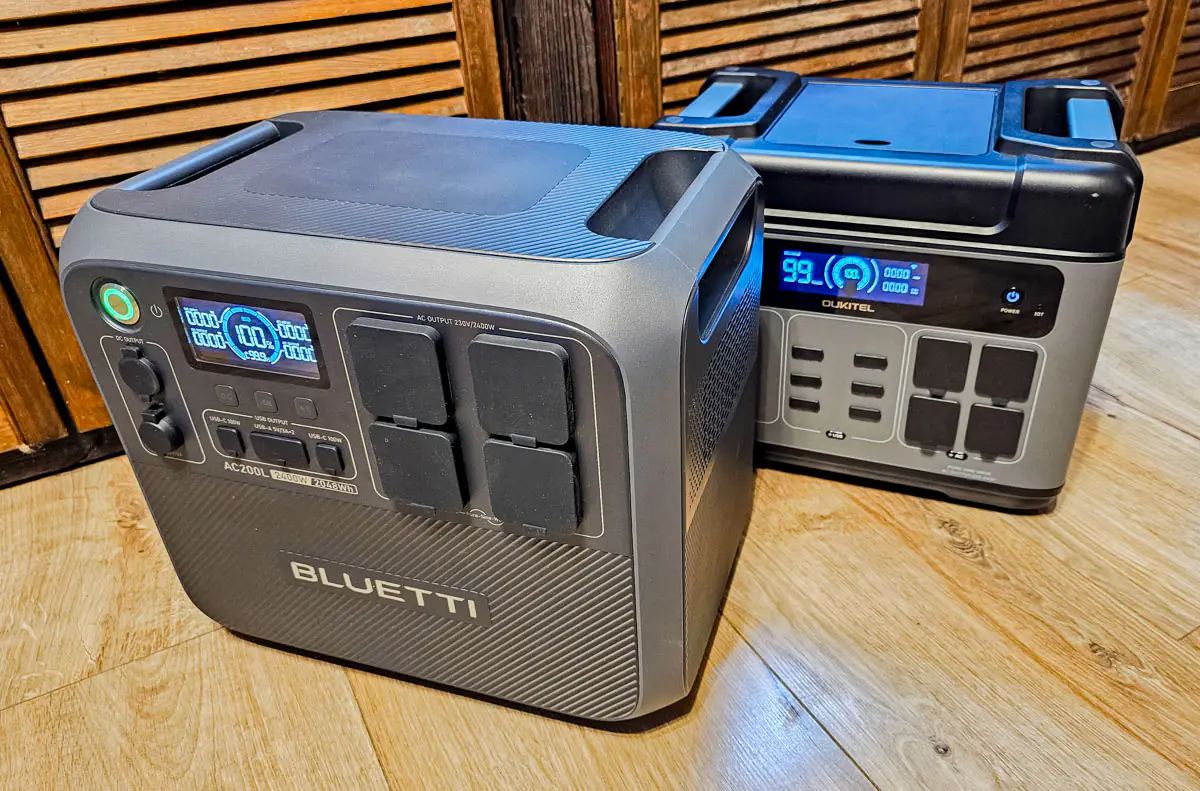
Both stations operate in a “set it up once and forget it” mode, which is an excellent feature. Once configured, there’s no need for ongoing adjustments or maintenance. However, monitoring functionality is still useful, and this is where mobile apps come into play. While the Wonderfree app for the OUKITEL station only offers basic features, these are generally sufficient for everyday use.
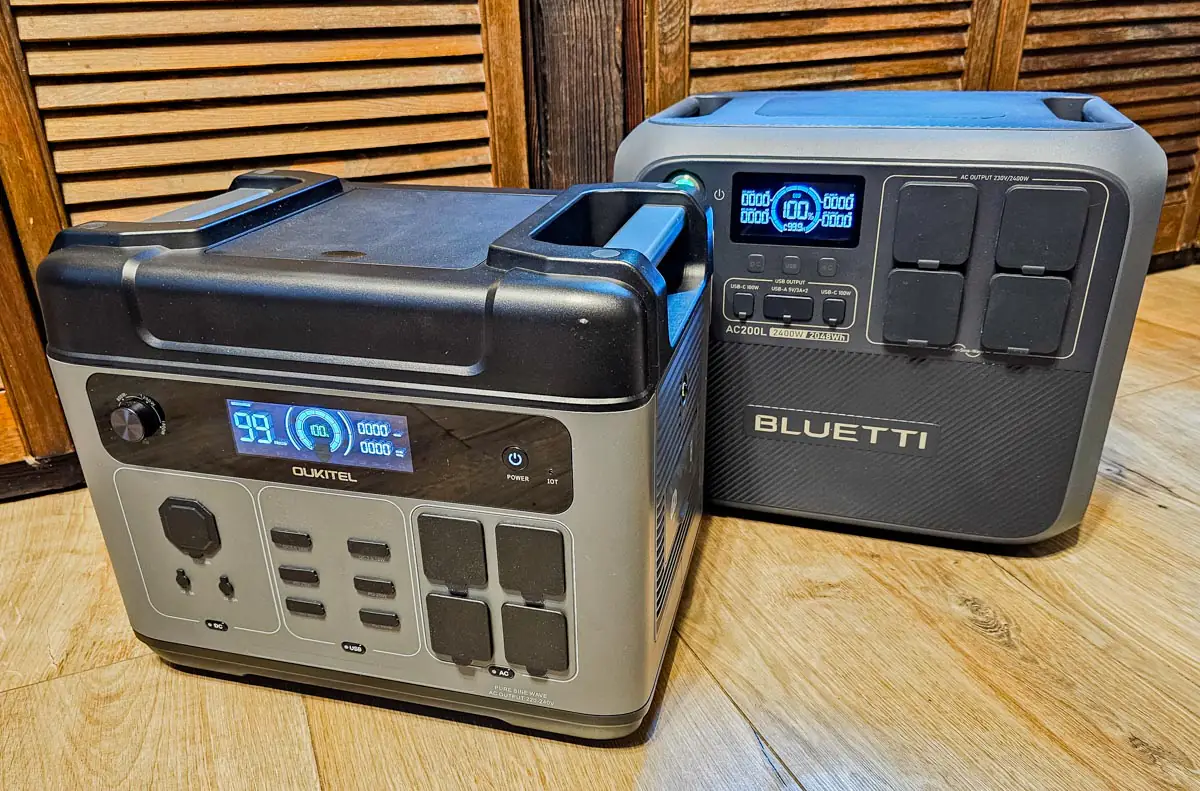
As mentioned earlier, the OUKITEL P2001 Plus has one notable drawback: a relatively high noise level during operation. This made it more suitable for placement in the kitchen, where noise is less of a concern. It powers the refrigerator in UPS mode and handles devices like a coffee maker, microwave, or toaster—though only one device can run at a time. Additionally, it can charge gadgets via USB ports or power other household appliances as needed.
Testing OUKITEL P2001 Plus in the kitchen – Connecting the refrigerator, coffee maker, microwave, toaster:

In contrast, the BLUETTI AC200L is positioned in the main living space and powers a comprehensive setup during outages. This includes a high-performance laptop, a 43” monitor, a motorized desk, peripherals, a receiver with 5 speakers and a subwoofer, a Wi-Fi router, a security hub, a 55” TV, and an aquarium filtration pump.
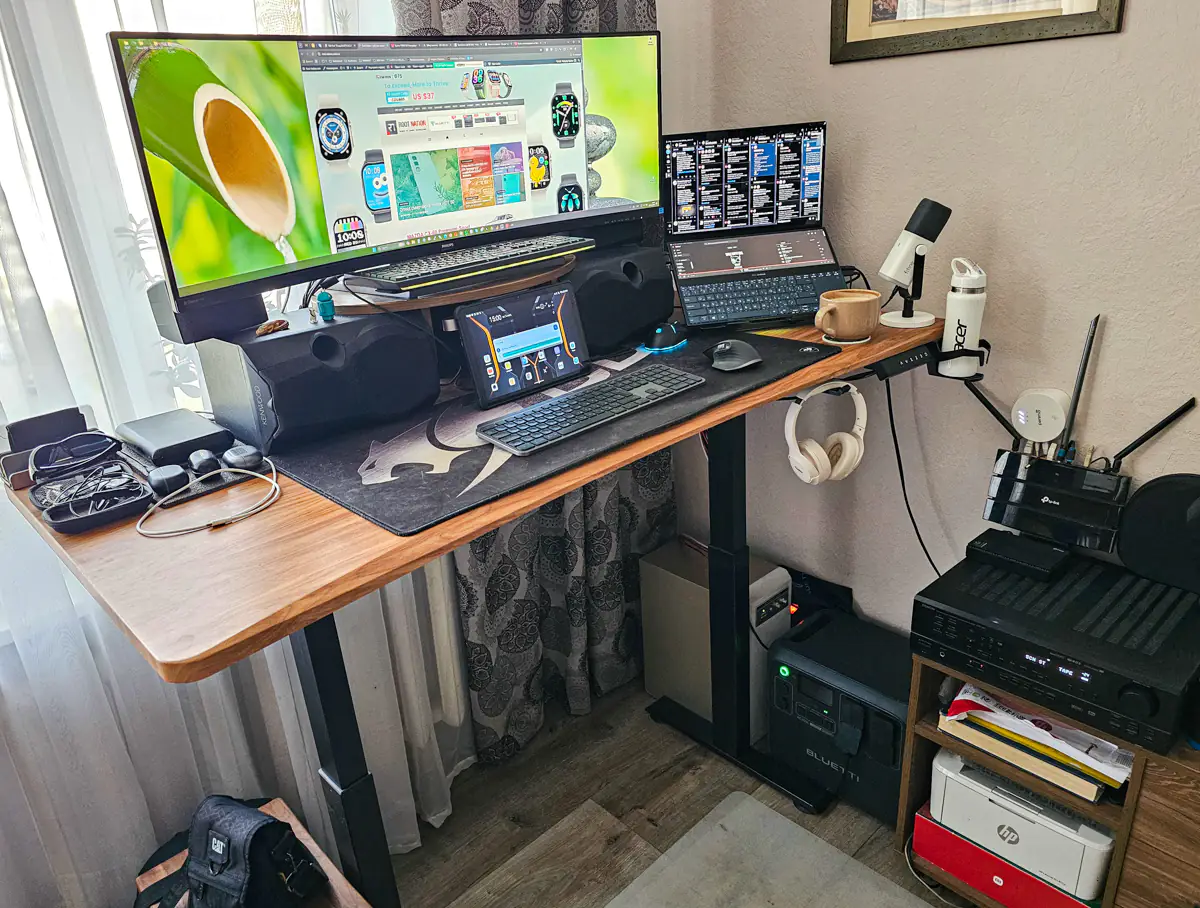
Both stations meet expectations and are solid performers in their respective categories. However, I find the BLUETTI AC200L more appealing overall. For example, it can power high-demand appliances like a washing machine or electric water heater, though doing so will significantly deplete its battery. Still, these appliances are best used with a grid connection when available.
Video: Running a washing machine from BLUETTI AC200L

Video: Operation of the electric boiler from BLUETTI AC200L

Testing BLUETTI AC200L in the kitchen: refrigerator, microwave, coffee maker, toaster:

On the other hand, the OUKITEL P2001 Plus handles all practical household needs during outages without issue. While it struggles with higher-demand appliances, this limitation rarely impacts real-life scenarios.
Pricing is a crucial factor. For the cost of one BLUETTI AC200L, you could almost buy two OUKITEL P2001 Plus units with a small additional investment. For budget-conscious buyers, this dual-station setup offers greater flexibility and utility.
If comfort and performance are priorities — especially for a single station in a living space — the BLUETTI AC200L is worth serious consideration. However, for those on a tighter budget or needing a cost-effective backup power solution, the OUKITEL P2001 Plus provides excellent value and covers all essential needs effectively.
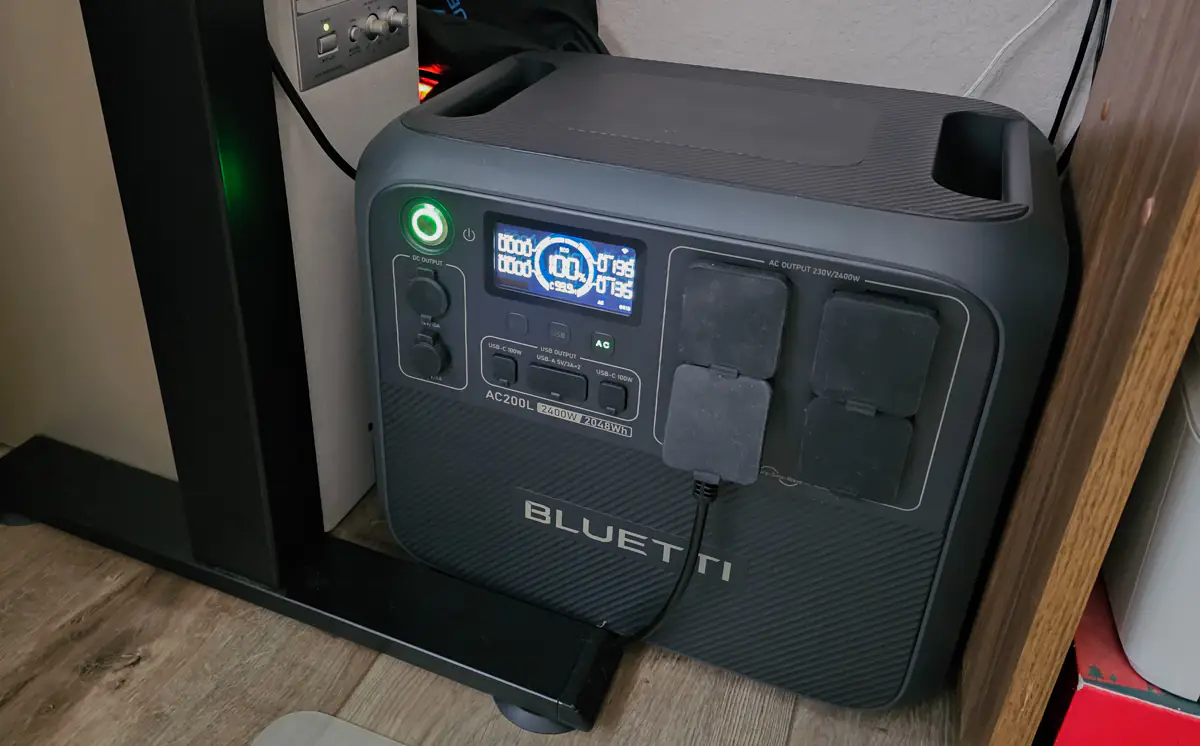
If you’re looking to build a comprehensive backup power system for a medium-sized apartment or a small vacation home, the BLUETTI AC200L offers a compelling solution. Its powerful inverter and the option to expand capacity with additional proprietary battery modules make it well-suited for such projects.
While the higher price tag reflects its quality and capabilities, these features might justify the investment for users seeking a reliable and scalable backup solution. High quality and robust performance often come at a premium — whether this is worthwhile depends on your specific needs and priorities.
Where to buy
BLUETTI AC200L

OUKITEL P2001 Plus



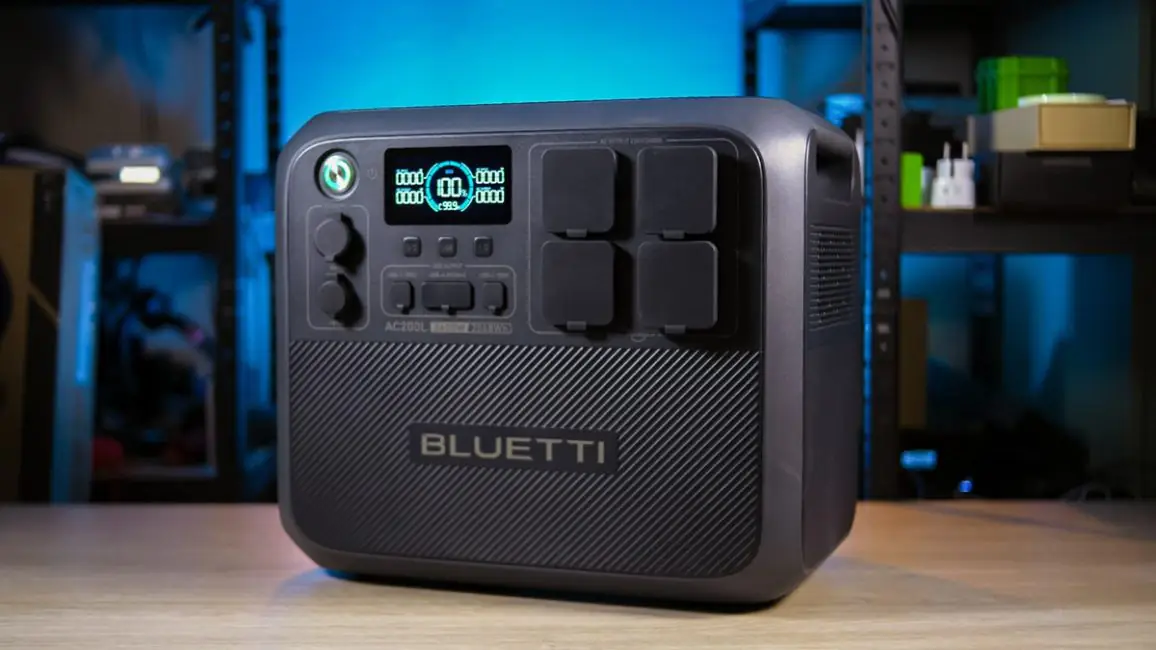
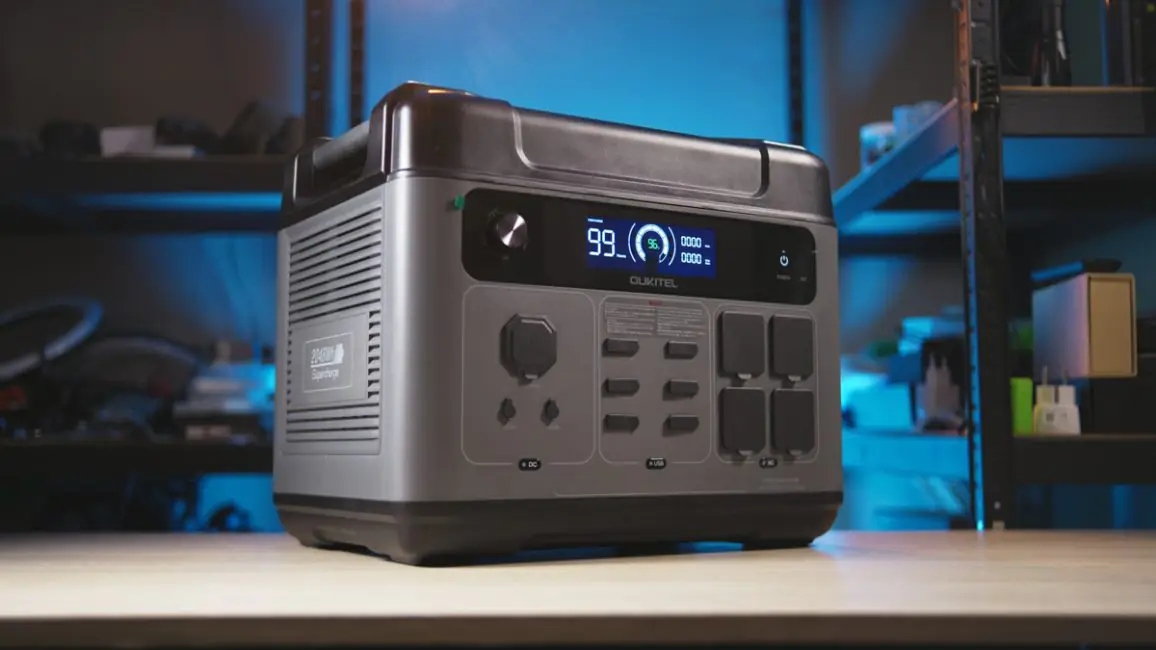
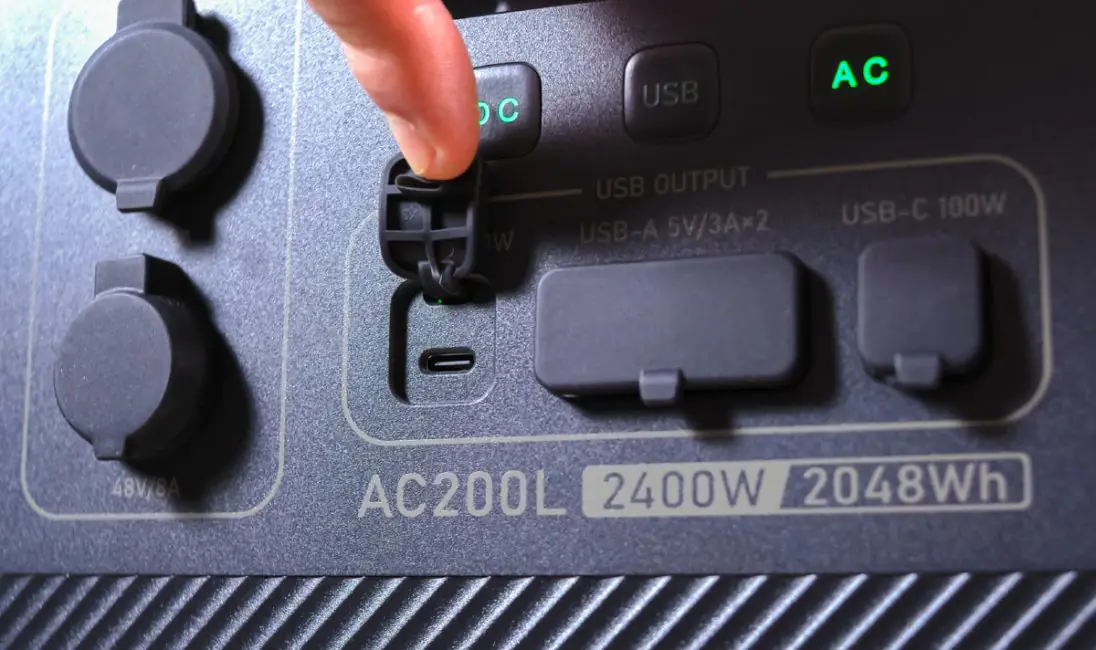
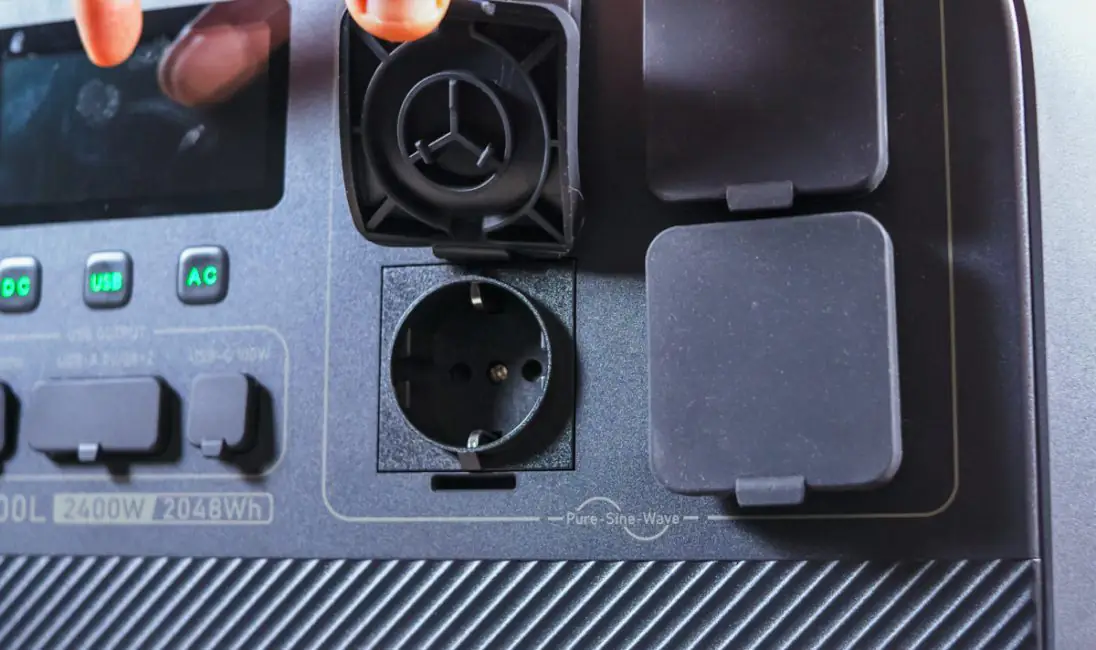
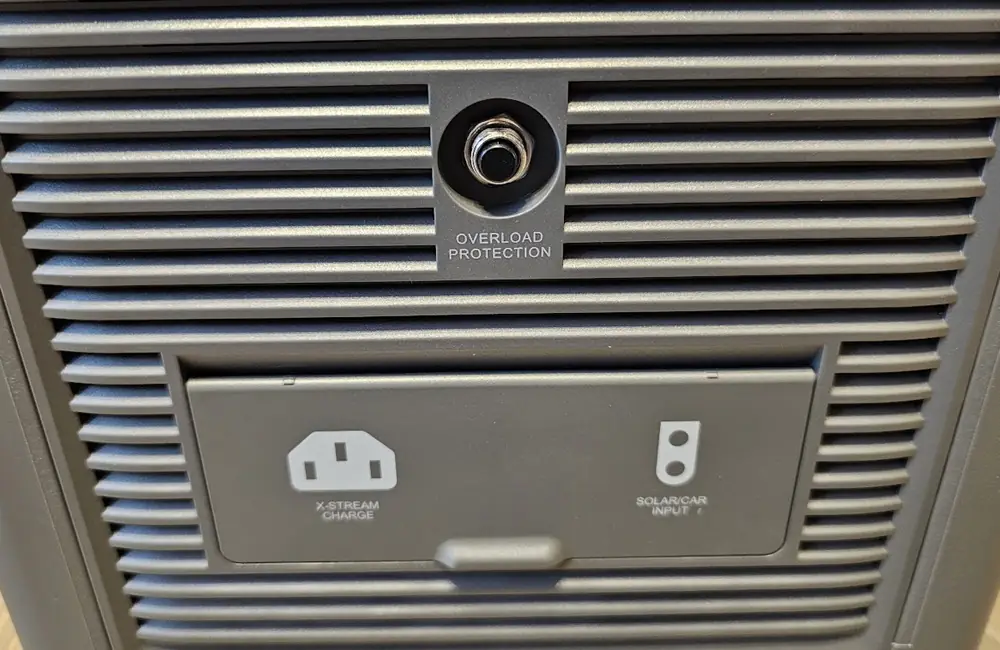
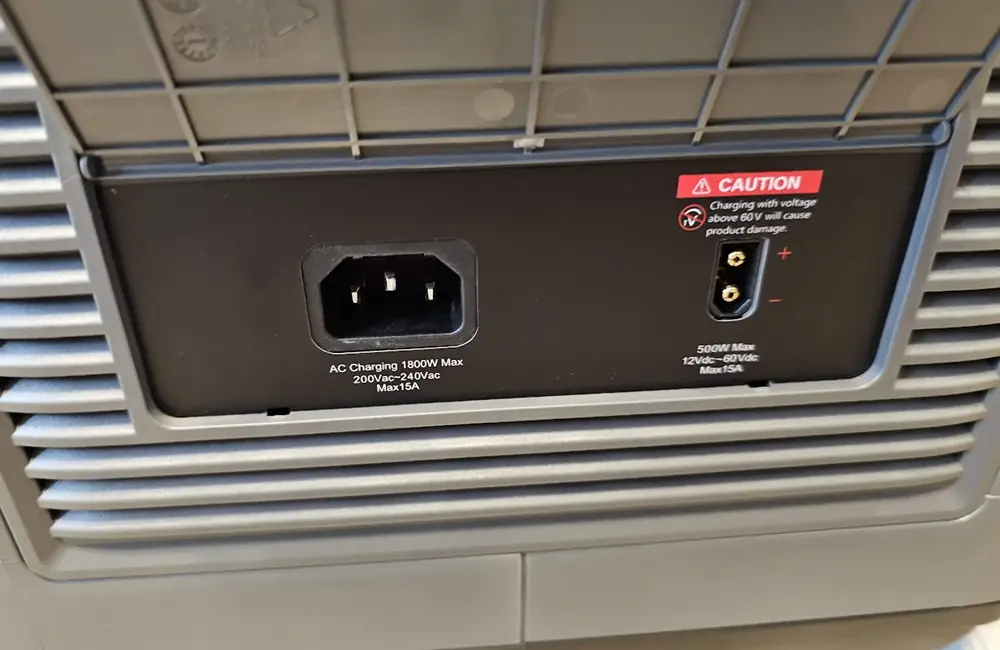
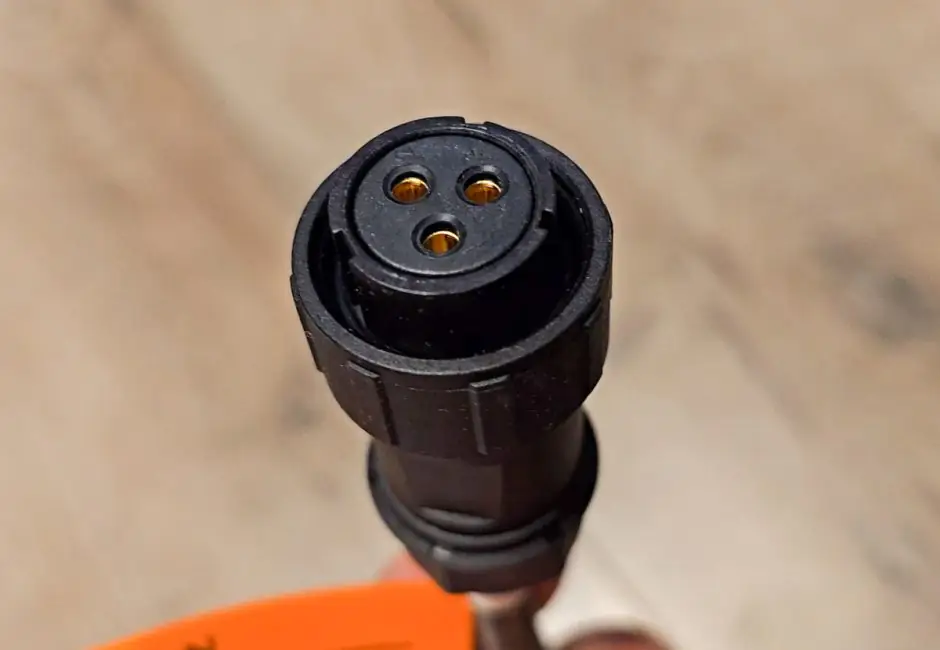

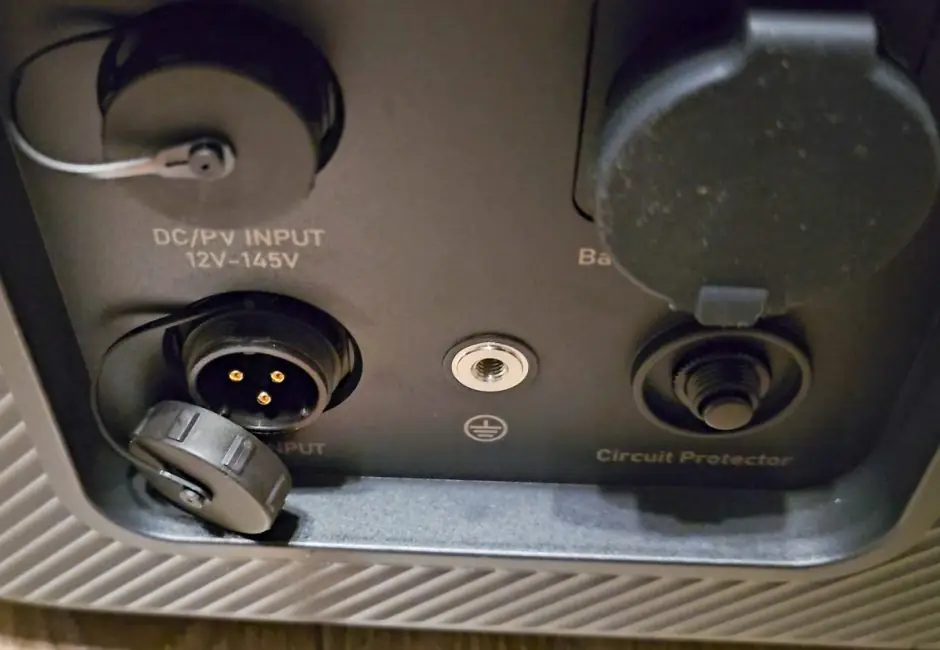
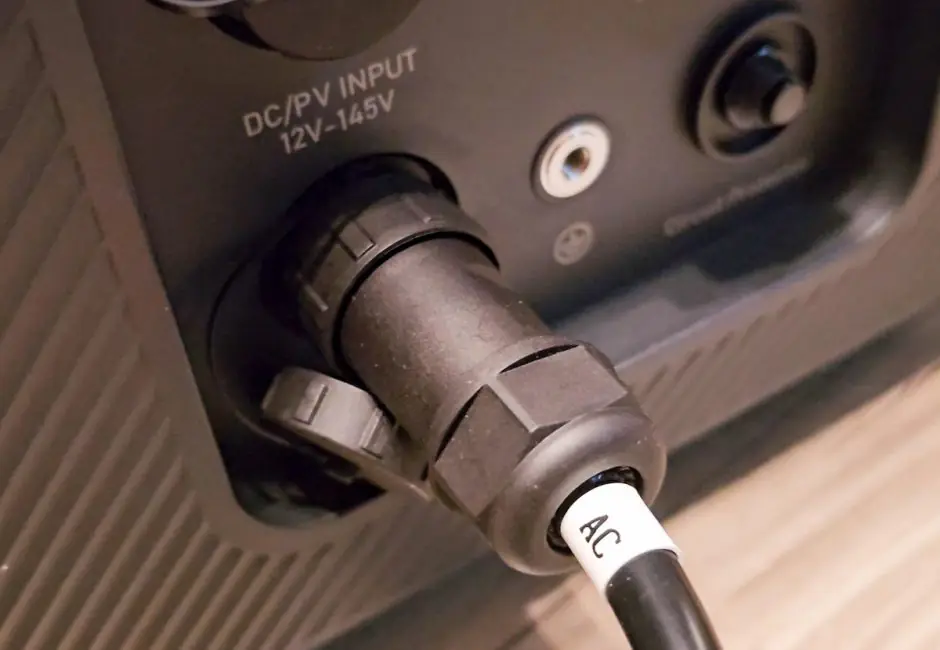
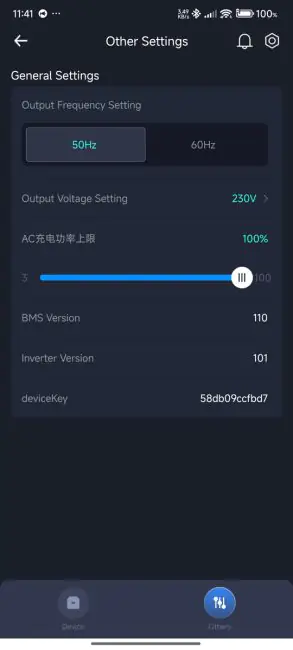
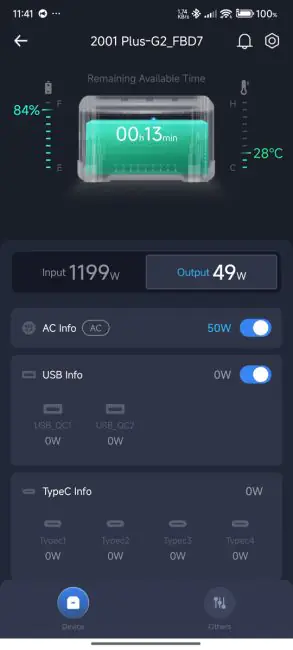

‼️A new firmware is available for the OUKITEL P2001 Plus station, it solves the problem of noisy operation of the cooling system. The firmware is still in beta status and is not being sent to devices en masse. To update, you need to send an email to support ([email protected]) and ask to send an update to your station. You need to specify the device id (it can be found through the Wonderfree application in the second tab).
You can wait a long time, but someday you will receive a notification in the program about the update.
I advise you to disconnect all consumers from the station, the station itself from the AC network, turn off the inverter and activate the DC interface with the button before starting the update (they advise this, apparently so that the station does not go to sleep in the process). Then be patient and do not interrupt the process, the update takes a very long time.
I myself updated, the station became very quiet, for a couple of days it seemed to work normally.
I encountered problems in the process, how it was eventually updated – I can’t even imagine. But apparently the new firmware is downloaded to a separate memory and then overwritten when the station is turned on and the DC interface is activated. And no matter what you do, this process is irreversible.
hello my friend, many thanks for the review.
regarding the software update for the noise p2001 plus, how is it?? is it stable ?? do you recommend update it ?? horrible noise…many thanks